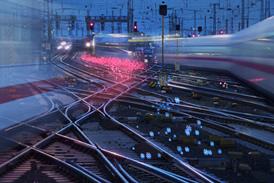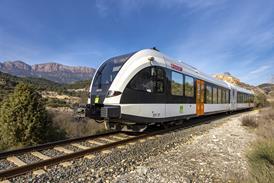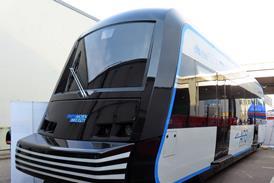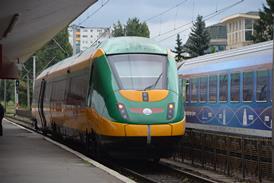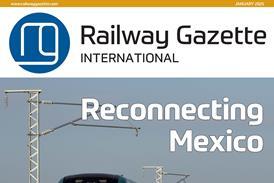DRIVEN by booming demand for steel in China and elsewhere, BHP Billiton expects to invest up to A$3bn over the next few years as it ramps up capacity to haul export iron ore from its mines in the Pilbara region of northwestern Australia to the docks at Port Hedland.
Maintaining a reputation for successfully pushing technology to the limit, the company’s railway business has confirmed plans to move to 40 tonne axleloads from the 37·5 tonnes maximum that currently applies to new wagons hauling ore out of the recently-developed Mining Area C, south of Yandi (RG 3.04 p139). The deciding factor is replacement of the railway’s remaining 6000 aluminothermic welds by flash-butt welds better able to withstand the region’s extreme conditions. As an example, the temperature of air at the intakes of cab air-conditioning units was recently measured at 61°C, according to Mike Darby, Vice-President, Railroad, at BHP Billiton. He was speaking at a joint International Union of Railways-International Heavy Haul Association technical workshop in Paris on July 16.
BHP Billiton’s driver-only trains routinely consist of six locos hauling 45000 gross tonnes. The company is planning to move to ’cruise control’ using simulator-related equipment from MRX Technology in Perth that advises the driver of the best way to handle the train for on-time arrival at Port Hedland - with long trains, part of the consist can be travelling downhill and part uphill, requiring ultra-careful management of longitudinal forces to avoid broken couplers.
In the pipeline are electronically-controlled brakes allowing trains to stop more quickly, while train lengths will increase from 312 to 336 wagons with the help of a fleet of 20 second-hand SD40-2 locomotives rebuilt in Mexico and purchased for the price of two new AC6000 units. All signalling on the BHP Billiton main line has solid-state interlockings and is solar-powered, and the company is on the point of buying a new train control system. Train cycle time on a round trip from mine to port and back is down to 30h from 36h in 1984, with 29h achieved in June this year. All this translates into a phenomenal rise in staff productivity, with annual tonnage railed per employee rising from 126000 in 1995-96 to over 300000 in 2003-04.
BHP Billiton has successfully managed a rash of rail breaks that peaked in 2000-01, and it is currently on the watch for a potential problem with broken axles identified by TTCI on heavy haul lines in North America. The railway’s current target is to ship 145 million tonnes a year from the mines at Yandi, MAC and Newman.
One of the keys to success has been careful management of the wheel-rail interface, according to Darby. That is one of many lessons to be learnt from the expertise at BHP Billiton, and one that the rest of the world’s railways should take to heart, especially the protagonists of separating ownership of operations from infrastructure. Or as one delegate in Paris put it, separation is not in the best interests of economic operation, and ’the wheel-rail interface is not the place for the engineering boundary’.

